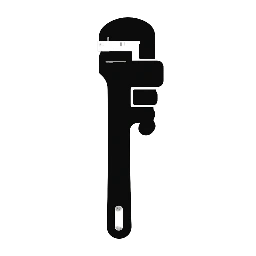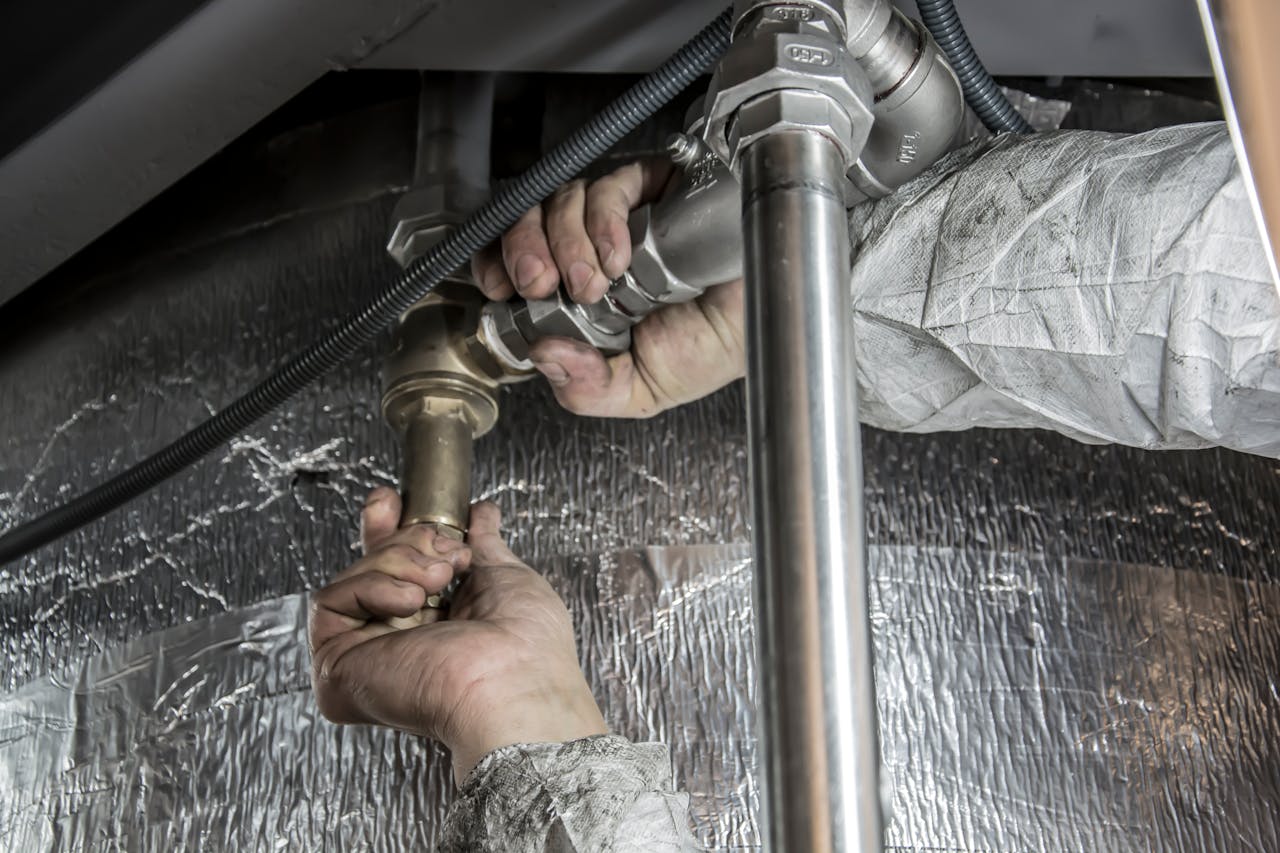A main sewer line clog is a plumbing nightmare no homeowner wants to face. It can lead to multiple drains backing up, foul odors, and even sewage in your yard or basement. While it’s often best to call a professional for severe clogs, understanding the process and knowing when to tackle it yourself can save you time and money.
This in-depth tutorial will guide you through the process of effectively clearing a main sewer line clog, from identifying the signs to utilizing the right tools and techniques.
Understanding Your Main Sewer Line
Your main sewer line is the central artery of your home’s drainage system. All drains from your sinks, toilets, showers, and washing machine eventually converge into this single, larger pipe, which then carries wastewater away from your home to the municipal sewer system or your septic tank. A clog in this line means that wastewater has nowhere to go, causing it to back up into your lowest drains first.
Signs You Have a Main Sewer Line Clog
Recognizing the symptoms early can prevent extensive damage. Here are the tell-tale signs of a main sewer line clog:
- Multiple Drains Backing Up: This is the most significant indicator. If your toilet gurgles when you run the washing machine, or your shower fills with water when you flush the toilet, it’s a strong sign the main line is blocked.
- Water Backing Up in Unexpected Fixtures: When you use one fixture, water or sewage appears in another, particularly those on lower levels (e.g., toilet water bubbling when the shower runs).
- Gurgling Sounds from Drains: You might hear gurgling noises from toilets or drains, even when not in use. This is often trapped air attempting to escape past a blockage.
- Foul Odors: Persistent sewage smells coming from drains throughout your house indicate that wastewater is not draining properly and gases are escaping.
- Sewage in the Sewer Cleanout: Your home has at least one “sewer cleanout” pipe, often a capped pipe in your yard or basement, designed for direct access to the main line. If sewage is overflowing or standing in this cleanout, you have a definite main line clog.
- Lush, Green Patches in Your Yard: If a specific area of your lawn is unusually green and healthy, it could indicate a cracked or leaking sewer line, with roots growing towards the water and nutrients, potentially causing a future clog or worsening an existing one.
When to Call a Professional
While some minor main line clogs can be addressed by a homeowner, it’s crucial to know when to call in the experts. You should contact a professional plumber if:
- The clog is severe and persistent: If your efforts aren’t making a difference or the clog keeps returning quickly.
- You suspect tree root intrusion: Tree roots are a common culprit and require specialized equipment (like hydro-jetting or professional augers) to remove effectively.
- There’s sewage overflowing: This is a health hazard and requires immediate professional attention.
- You’re uncomfortable with the process: Working with sewer lines can be messy and carries potential health risks.
- You don’t have the right tools: Attempting to clear a main line clog without proper equipment can worsen the problem or damage your pipes.
- You suspect a broken or collapsed pipe: These issues require excavation and professional repair.
Tools You Might Need
For tackling a main sewer line clog yourself, you’ll primarily need:
- Heavy-Duty Plunger: A toilet plunger (flange plunger) is essential, but it might not be enough for a main line clog.
- Sewer Snake (Drain Auger): For main sewer lines, you’ll need a longer, heavier-duty sewer snake, often 50-100 feet long. These can be manual or electric. You can often rent these from home improvement stores.
- Gloves and Eye Protection: Essential for safety and hygiene.
- Bucket and Towels: For containing any overflow or mess.
- Garden Hose (for hydro-jetting attachment, if applicable): If you opt for a DIY hydro-jetting attachment.
- Flashlight: To inspect the cleanout or the line if visible.
Avoid chemical drain cleaners for main sewer lines. They are rarely effective for large clogs and can be corrosive, potentially damaging your pipes or reacting dangerously with other substances in the line, making the problem worse for a professional to clear.
Step-by-Step Guide to Clearing a Main Sewer Line Clog
Disclaimer: This tutorial provides general information. Always prioritize safety and consult a professional if you are unsure or uncomfortable.
Step 1: Locate Your Main Sewer Cleanout
The main sewer cleanout is your access point to the main sewer line. It’s typically a 3- to 4-inch capped pipe. Common locations include:
- Near the foundation of your house: Often closest to the bathrooms or where the main drain exits the house.
- In the basement or crawl space: If your home has one, look for a pipe with a screw-off cap.
- In the yard: Sometimes near the street or sidewalk.
Step 2: Prepare the Area and Yourself
- Safety First: Put on sturdy gloves and eye protection. You’ll be dealing with wastewater that can contain harmful bacteria.
- Protect Your Surroundings: Lay down old towels or plastic sheeting around the cleanout and any affected drains to contain spills. Have a bucket ready.
- Open Windows/Ensure Ventilation: Sewer gas can be unpleasant and, in high concentrations, potentially dangerous.
Step 3: Open the Cleanout Cap (Carefully!)
- Slowly Unscrew the Cap: Use a pipe wrench if needed. Be prepared for a rush of water and sewage if there’s significant backup pressure. This is why you need a bucket and towels ready.
- Observe the Flow: If water immediately gushes out, it confirms the clog is further down the line (closer to the street or septic tank). If there’s no water, the clog might be closer to the house.
Step 4: Insert the Sewer Snake (Drain Auger)
- Feed the Cable: Gently push the head of the sewer snake into the cleanout opening.
- Advance the Snake: As you push, turn the handle of the manual snake (or activate the motor on an electric one). This rotation helps the auger head navigate bends and break through blockages.
- Feel for Resistance: You’ll feel resistance when you hit the clog. Continue to push and rotate, slowly and steadily.
- Work Through the Clog: Don’t force the snake. Let the rotating head do the work. You might need to pull back slightly and push forward again to break up stubborn material. The goal is to either break up the clog enough for it to flow or to hook onto it and pull it out.
- Go Beyond the Clog: Once you feel the resistance ease, continue feeding the snake a few more feet to ensure you’ve completely passed through the blockage.
Step 5: Retract the Sewer Snake
- Slow and Steady: Carefully pull the snake back out, turning it as you retract.
- Clean the Cable: Have a rag ready to wipe down the cable as it comes out to minimize mess.
- Inspect the Debris: Examine any material brought up by the snake to understand the nature of the clog (e.g., tree roots, grease, hair, foreign objects). This can help with future prevention.
Step 6: Flush the Line
- Close the Cleanout (Temporarily): Once the snake is fully retracted, loosely replace the cleanout cap to prevent splash-back.
- Run Water: Go inside and run water through several fixtures, starting with the furthest from the cleanout and working your way closer. Flush toilets multiple times.
- Observe Drainage: Check if the water is flowing freely down the drains. If it is, the clog is likely cleared.
- Check the Cleanout Again: If water is flowing freely, open the cleanout cap again to ensure there’s no standing water and the flow is clear.
Step 7: Final Cleanup
- Secure the Cleanout Cap: Once you’re confident the clog is gone, screw the cleanout cap on tightly.
- Clean Up: Disinfect the affected areas, tools, and yourself thoroughly.
Prevention is Key
Once you’ve successfully cleared your main sewer line, take steps to prevent future clogs:
- Be Mindful of What Goes Down Drains:
- No Grease: Never pour cooking grease or oil down the drain. Let it solidify and dispose of it in the trash.
- No “Flushable” Wipes: Despite their label, most “flushable” wipes do not break down in pipes and are a major cause of clogs. Only flush toilet paper.
- Limit Food Scraps: Use your garbage disposal sparingly. Scrape plates into the trash before rinsing. Avoid fibrous foods (celery, potato peels), coffee grounds, and eggshells.
- Hair Catchers: Use strainers in showers and bathtubs to catch hair.
- Tree Root Management: If you have large trees near your sewer line, consider professional root barrier installation or regular professional snaking/hydro-jetting to manage root growth.
- Regular Flushing: Periodically run hot water down all your drains, especially kitchen sinks, to help flush away minor buildup.
- Enzyme Cleaners: Consider using enzyme-based drain cleaners monthly. These products use beneficial bacteria to break down organic matter and are generally safe for pipes, unlike harsh chemical cleaners.
- Professional Inspections: Schedule professional sewer line inspections every few years, especially if your home is older or you’ve experienced previous issues. A plumber can use a camera to identify potential problems before they become major clogs.
By understanding the signs, having the right tools, and taking preventative measures, you can effectively clear main sewer line clogs and keep your plumbing system flowing smoothly.


Leave a Reply